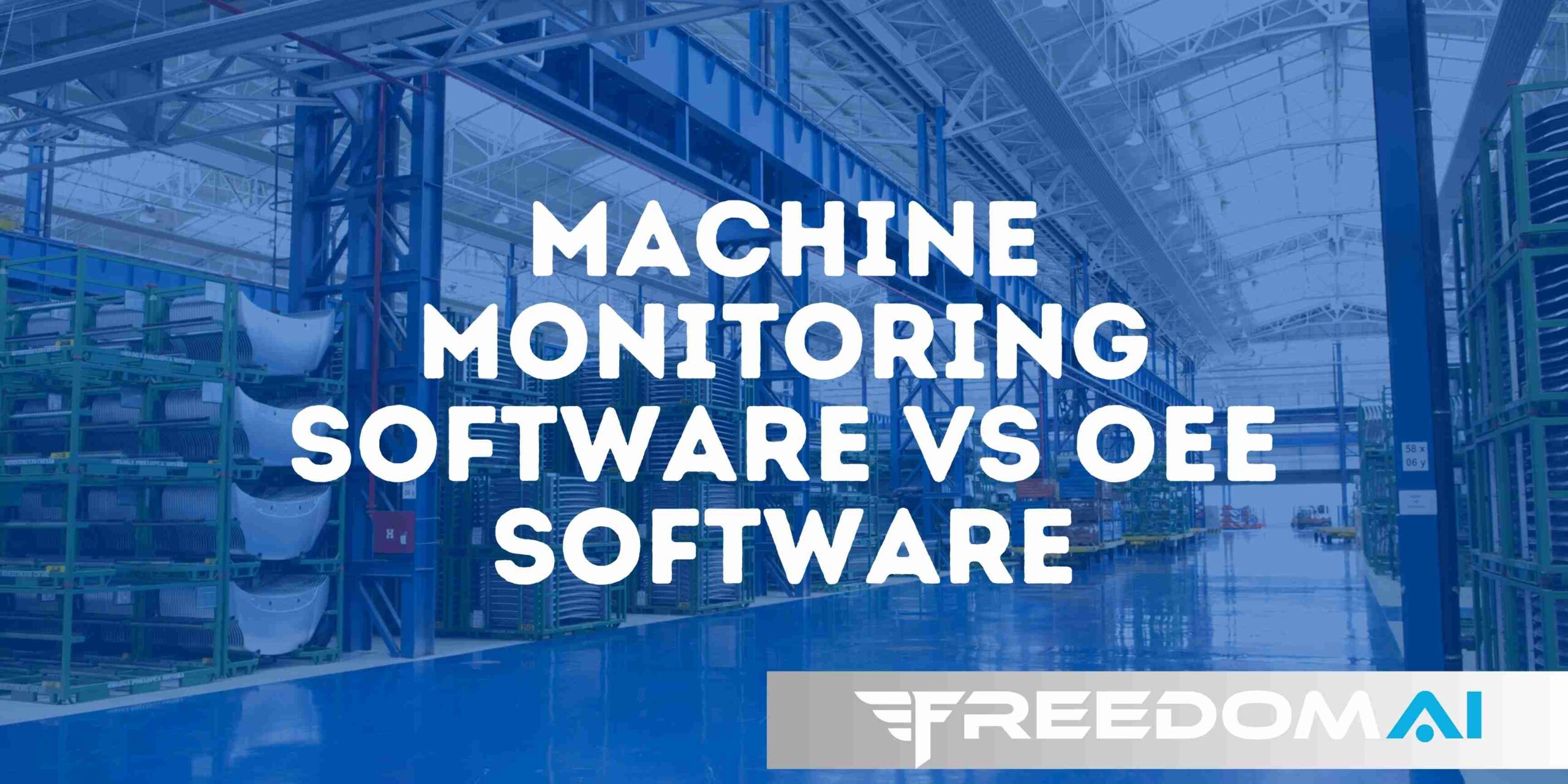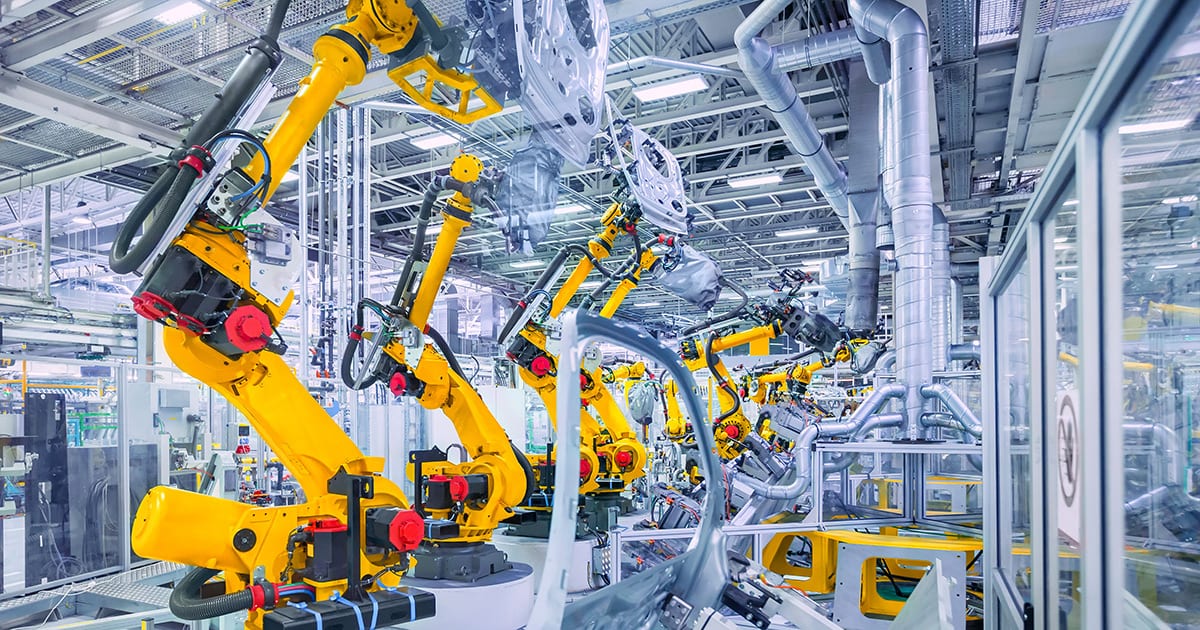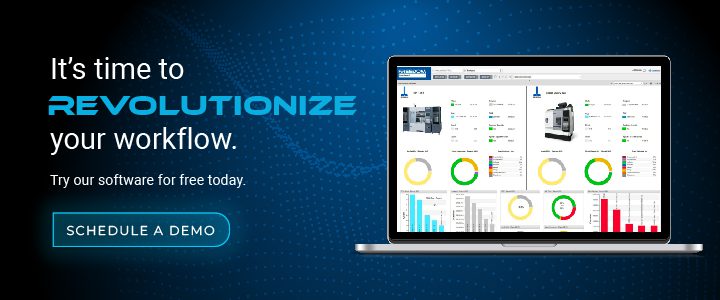What is Machine Monitoring?
Machine monitoring harnesses the power of the industrial internet of things (IIOT) to ensure manufacturing processes run smoothly. If you are new to the concept and want to find out how it can boost manufacturing productivity, we’ve put together a helpful guide below.
In simple terms, machine monitoring involves uploading machine and sensor data feeds to the internet or internal company network to monitor manufacturing systems in real-time and produce advanced productivity analyses.
Machine monitoring is a relatively straightforward process in the manufacturing industry.
Typically, steps involve:
1. Collecting data from machines and related sensors
2. Uploading this data to the internet or internal company network
3. Monitoring and analyzing collated machine/sensor data
Machine Monitoring Data Collection
Data collected during this process tends to be specific to certain manufacturing applications. Segregating data in this way can help manufacturing executives, business owners, and other manufacturing personnel improve their machine utilization and processes.
Common data categories to analyze include the following:
• Units of good parts produced
• Machine availability
• The rate at which parts are produced
• Downtime and utilization figures (including both planned and unplanned stops)
• Alerts and Events (used to improve availability and utilization)
• Overall Equipment Effectiveness (OEE)
• Other sensor data relevant to the manufacturing process
How to implement machine monitoring
Before you can collect data about the productivity of your manufacturing equipment, you must source and install monitoring technologies. This could include:
1. Hardware
Firstly, you will need an IIOT device designed to help manufacturers collect data from their machines and transfer it to the cloud or internal company network. Secondly, you will need to purchase hardware such as sensors and cables to connect your various technologies, as well as a computer to analyze any data collected.
2. Hardware-free technologies
Modern manufacturing equipment is often produced with data-capture capabilities pre-installed. If this applies to your machine, you simply need to connect your machines to suitable analysis software.
What are the advantages of machine monitoring?
There are several reasons why you may wish to adopt machine monitoring systems, including:
1. It makes data collection quicker and easier
In the past, capturing a large amount of machine-level data was almost impossible, particularly for small companies. Indeed, most manufacturers were forced to capture imperfect data sets using a humble pen and paper.
Thanks to the wide availability of automated data collection tools, however, manufacturing companies of all sizes can monitor their machines closely and in real-time. As a result, they can improve their processes more easily than ever before.
2. It allows manufacturers to embrace the digital revolution
As industries around the world shift to digital ways of working, machine monitoring represents a vital step in this revolution for manufacturers. By investing in machine monitoring solutions now, manufacturing companies can use them as a foundation on which to build further digital initiatives. For example, you may wish to implement machine learning solutions to enhance data collection processes or invest in real-time machine monitoring solutions.
Ultimately, machine monitoring should form the core element of any digitalization strategy. Once this is in place, you can start your journey towards creating a smart factory.
3. It offers real-time OEE
Most manufacturing companies use OEE as a measure to improve the efficiency of their machines. Unfortunately, however, many still rely on manual data-collection processes that are time-consuming and error-prone.
With automated machine monitoring, however, you can collect real-time OEE data quickly and easily. What’s more, this data will be highly reliable, helping you cut down on unnecessary expenditures and boost the productivity of your machines.
4. It facilitates production visualization
Machine monitoring allows manufacturers to roll out production visualization, therefore helping supervisors and operators maintain high standards of productivity. With production visualization, workers on the shop floor can see whether they are keeping up with production plans. If they are working slowly, for example, they can speed up before their shift ends.
Implementing production visibility in this way will enhance engagement among operators and can help supervisors come up with innovative new operational strategies.
5. It streamlines communication on the shop floor
If you’re looking to boost productivity and enhance the experiences of people working for your company, you must streamline communication processes on the shop floor. Fortunately, machine monitoring software can help you achieve this by improving the visibility of production processes. Better awareness of how well your operation is running will ensure that everyone is on the same page, encouraging teamwork, integrity, and engagement.
In other words, machine monitoring allows team leaders to connect individual workers’ actions with process outcomes and manufacturing performance. If this information is communicated sensitively and with a view towards improving processes, you will soon see productivity increase.
Machine Monitoring & Freedom
-
Machine Monitoring Software vs OEE Software: What Manufacturers Need to Know

Introduction: Why This Comparison Matters When evaluating digital transformation initiatives, many manufacturers face the question: Do we need machine monitoring software, OEE software, or both? While these tools overlap in functionality, they serve different purposes in factory performance and decision-making. Understanding the distinctions helps technical buyers, engineers, and executives choose the right investment. What…
-
MTConnect vs OPC UA: What’s the Difference?

Introduction: Why This Comparison Matters In today’s Industry 4.0 world, manufacturers rely on data-driven decision-making. But with so many machine communication standards available, choosing the right one can feel overwhelming. Two of the most widely used are MTConnect and OPC UA. Both are designed to improve interoperability and data sharing, yet they serve different purposes.…
-
How Does Predictive Maintenance Work?

Introduction Predictive maintenance works by using real-time machine data and advanced analytics to detect early signs of equipment failure before it happens. By monitoring performance trends and setting thresholds, companies can fix machines at the right time—neither too early nor too late—reducing downtime and repair costs. Step-by-Step: How Predictive Maintenance Works Data Collection –…





